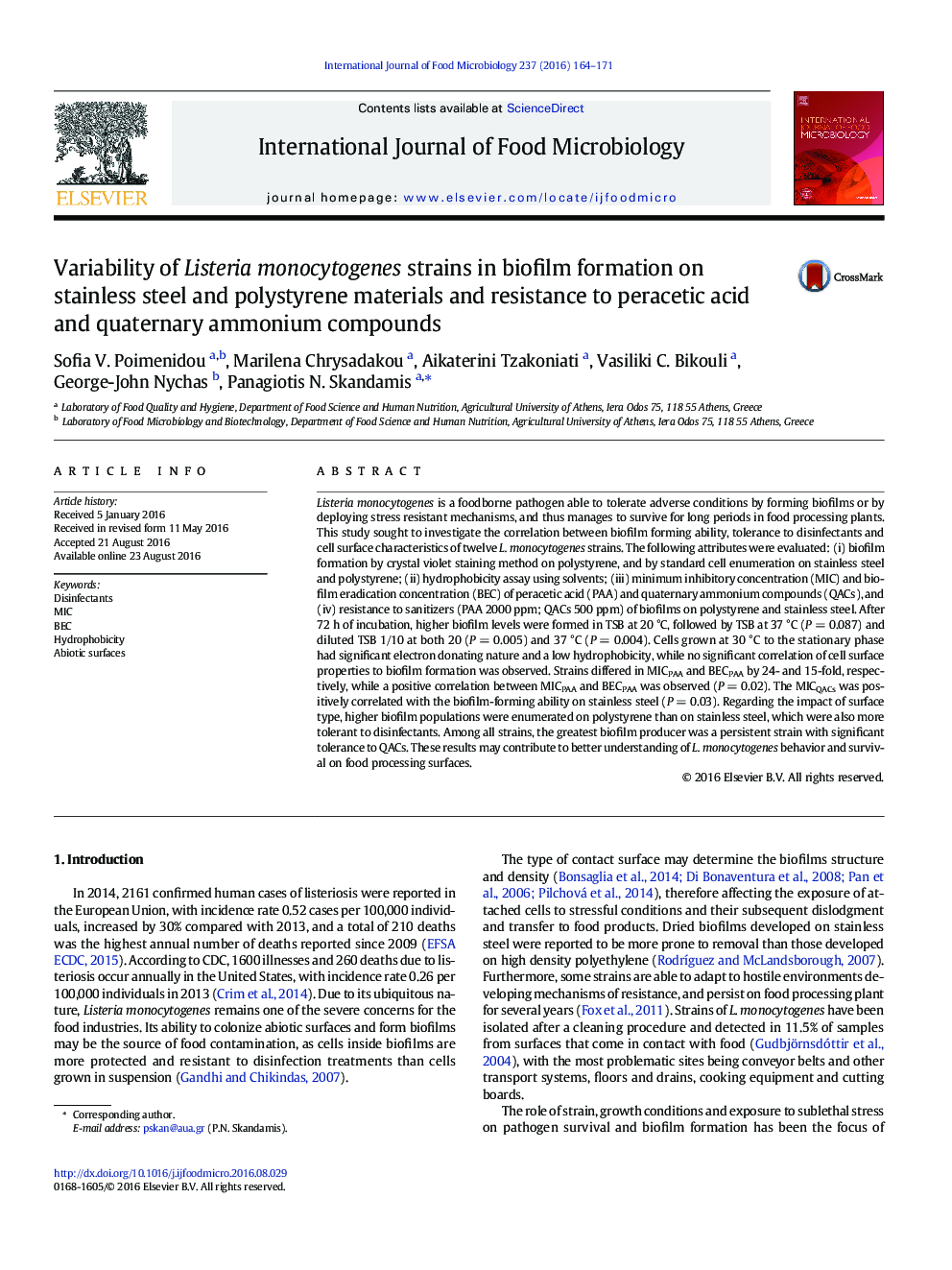| کد مقاله | کد نشریه | سال انتشار | مقاله انگلیسی | نسخه تمام متن |
|---|---|---|---|---|
| 6289741 | 1616546 | 2016 | 8 صفحه PDF | دانلود رایگان |

- Biofilm formation was enhanced on polystyrene compared to stainless steel.
- The greatest biofilm producer was a persistent strain with significant QACs tolerance.
- Biofilms formed on polystyrene were more tolerant to disinfectants than those formed on stainless steel.
- MICPAA was positively correlated with BECPAA.
- Biofilm formation on stainless steel was positively correlated with tolerance to QACs.
Listeria monocytogenes is a foodborne pathogen able to tolerate adverse conditions by forming biofilms or by deploying stress resistant mechanisms, and thus manages to survive for long periods in food processing plants. This study sought to investigate the correlation between biofilm forming ability, tolerance to disinfectants and cell surface characteristics of twelve L. monocytogenes strains. The following attributes were evaluated: (i) biofilm formation by crystal violet staining method on polystyrene, and by standard cell enumeration on stainless steel and polystyrene; (ii) hydrophobicity assay using solvents; (iii) minimum inhibitory concentration (MIC) and biofilm eradication concentration (BEC) of peracetic acid (PAA) and quaternary ammonium compounds (QACs), and (iv) resistance to sanitizers (PAA 2000 ppm; QACs 500 ppm) of biofilms on polystyrene and stainless steel. After 72 h of incubation, higher biofilm levels were formed in TSB at 20 °C, followed by TSB at 37 °C (P = 0.087) and diluted TSB 1/10 at both 20 (P = 0.005) and 37 °C (P = 0.004). Cells grown at 30 °C to the stationary phase had significant electron donating nature and a low hydrophobicity, while no significant correlation of cell surface properties to biofilm formation was observed. Strains differed in MICPAA and BECPAA by 24- and 15-fold, respectively, while a positive correlation between MICPAA and BECPAA was observed (P = 0.02). The MICQACs was positively correlated with the biofilm-forming ability on stainless steel (P = 0.03). Regarding the impact of surface type, higher biofilm populations were enumerated on polystyrene than on stainless steel, which were also more tolerant to disinfectants. Among all strains, the greatest biofilm producer was a persistent strain with significant tolerance to QACs. These results may contribute to better understanding of L. monocytogenes behavior and survival on food processing surfaces.
Journal: International Journal of Food Microbiology - Volume 237, 21 November 2016, Pages 164-171